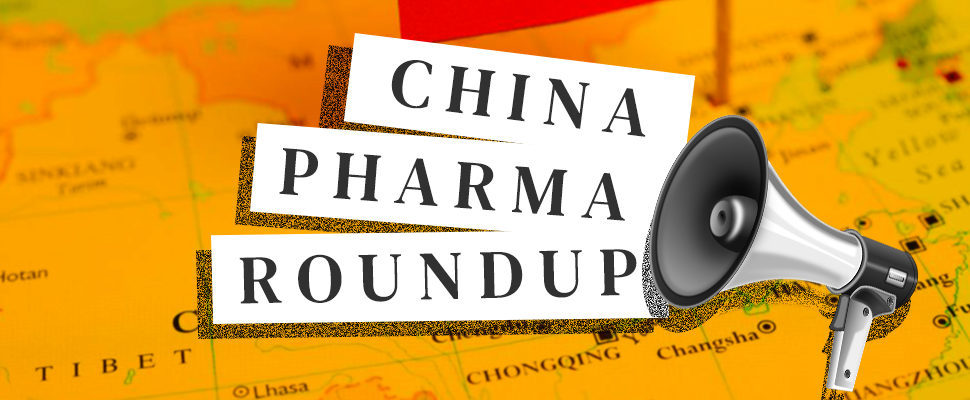A roundup of some of the most significant recent stories from the Chinese pharmaceutical industry, including a slate of international investment which seems to suggest that – despite ongoing political tensions – China remains an attractive market for multinational pharma.
AstraZeneca defies geopolitics to bet on China – Financial Times (paywalled)
AstraZeneca’s chief executive returned from a recent trip to China exuberant about an “explosion” of biotech companies in the country and the potential for his business to deliver drugs discovered there to the world.
Pascal Soriot said the market was “completely open” for pharma investment. “It’s hard to not be impressed by the progress that has been made in China over the last few years,” he added on a press call in April.
While the G7 has warned of the threat of “economic coercion” from China and the US is scrutinising Chinese investment in its biotech sector, AstraZeneca is focused on capitalising on its position in China as the largest overseas pharmaceutical company by sales.
Moderna looks for opportunities in China after registering legal entity – Reuters
Vaccine maker Moderna Inc (MRNA.O) said on Friday it was looking for opportunities in China after confirming that it had registered a legal entity in the world’s second largest economy.
The U.S. biotech firm registered a unit called Moderna (China) Biotech Ltd in Shanghai on May. 24 with capital of $100 million, according to Chinese data providers including company database Qichacha.
“We are exploring opportunities to engage in the market and bring the power of Moderna’s mRNA platform to the people of China,” a company spokesperson said in response to a query from Reuters.
Sanofi to up synergy with Chinese pharma market – China Daily
French pharmaceutical company Sanofi will accelerate the modernization of its manufacturing sites and research network in China to better integrate these into its global industrial system, a senior company executive said.
The company will also reform its medical practices, and share revolutionary new drug research and development and manufacturing technologies, innovative therapies and new drugs with China, to contribute more to the development of China’s pharmaceutical industry through cross-border integration, Wayne Shi, president of Sanofi Greater China, told China Daily in an exclusive interview.
“With deep roots in China for over 40 years, Sanofi is chasing the miracles of science to make continuous breakthroughs in digital innovation and local research and development, and aiming to be a ‘local-multinational’ pharmaceutical company,” he said. “We have always been optimistic about the Chinese market and will continuously expand our investment in China.”
Aurobindo Pharma completes plant installation in China – The Hindu Business Line
Aurobindo Pharma has completed the installation of its plant in China and is planning to commission it in the first quarter of next fiscal, said Santhanam Subramanian, Chief Financial Officer of the company.
“The China plant has been fully installed and is expected to be commissioned in Q1 FY25. We are in the process of manufacturing the exhibit batches,” he said, adding: “We will be filing around five products from the China plant and will start with the European despatches because it takes quite a lot of time to get the approval from Chinese regulators.”
Aurobindo has lined up commissioning of three plants, including the one in China. A part of its US Raleigh facility was commissioned in March and the remaining is expected to get commissioned in due course. The Lyfius plant, which will produce Pen-G, is expected to be commissioned by the end of 2023.
The US is relying more on China for pharmaceuticals — and vice versa – Atlantic Council
The drivers of US-China trade are shifting in the wake of the US-China trade war and the Covid-19 pandemic. In some areas, like aircraft and their component parts, trade between the two countries has shrunk considerably. Yet, in other areas trade between them is reaching new heights. Pharmaceutical products have emerged as one of the largest winners. Over the past five years, two-way trade of pharmaceuticals has grown from composing just 0.6 percent of the trading relationship to nearly 3 percent of its total value. This growth is not the result of a surge in cheap, Chinese imports. The trade is broadly balanced—the US imported $10.2B while exporting $9.3B to China—and is driven by advanced medicines such as cancer treatments and antibiotics.
China’s $220 Billion Biotech Initiative Is Struggling to Take Off – Bloomberg (paywalled)
Despite enormous investment in the sector since 2015 and some huge IPOs, the nation approved its first mRNA vaccine only this year.
Four years after Li Hangwen returned from the US to launch a startup in Shanghai to develop a cancer vaccine with messenger RNA technology, a mysterious coronavirus emerged in the city of Wuhan. Trained in the US and long inspired by Moderna Inc.’s efforts at tapping genetic material for treatments, the cancer researcher quickly turned his efforts toward developing a shot against Covid-19 for China.


